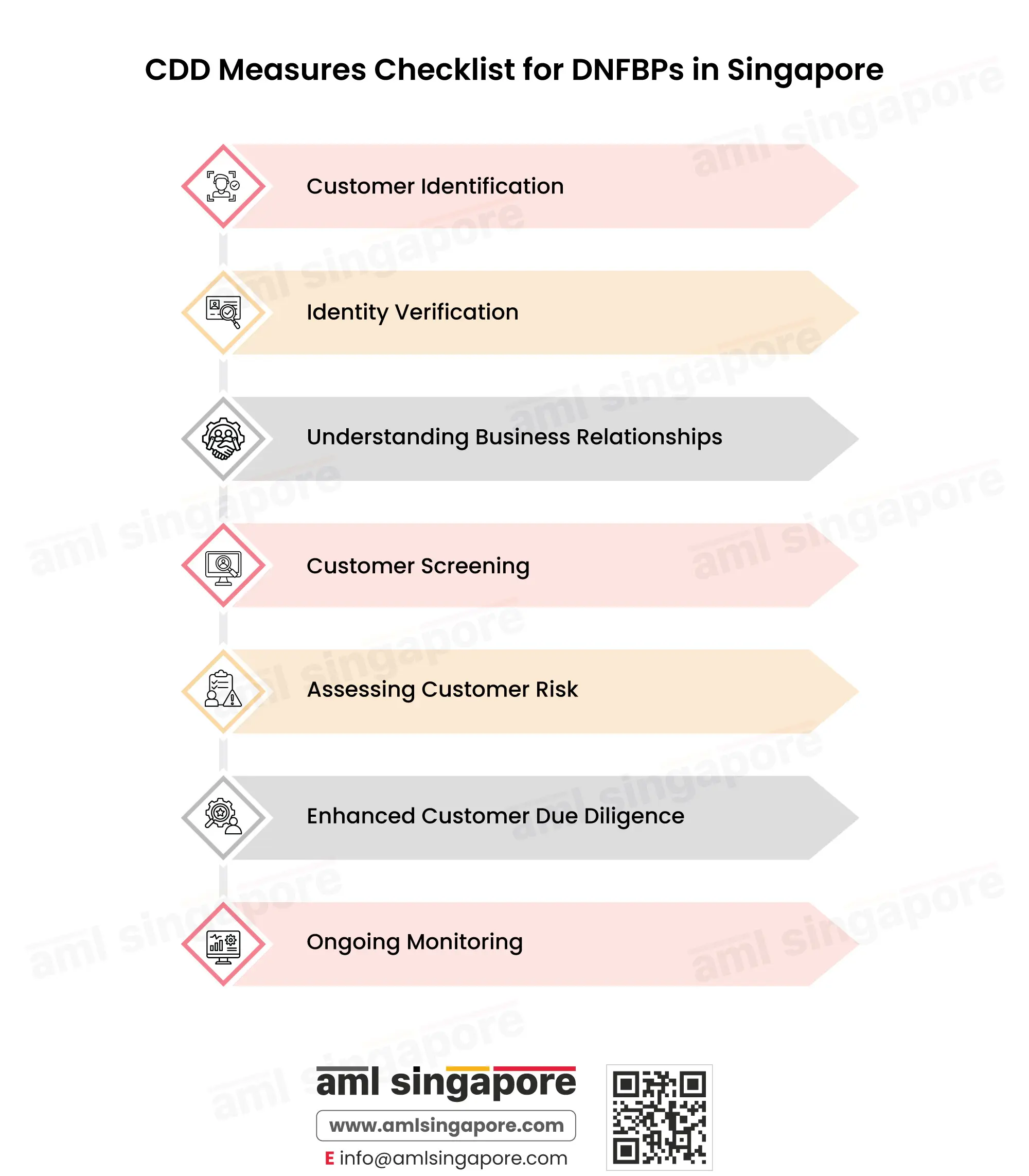CDD Measures Checklist for DNFBPs in Singapore
CDD Measures Checklist for DNFBPs in Singapore
Designated Non-Financial Businesses and Professions (DNFBPs) working in Singapore must stay ahead of financial crimes. For this purpose, the regulatory authority in Singapore enacted an effective regulatory framework consisting of primary laws and Other Sector-specific Regulations and Guidelines for DNFBPs. The Primary law consists of the Corruption, Drug Trafficking and Other Serious Crimes Act (Confiscation of Benefits), 1992; the Terrorism (Suppression of Financing) Act, 2002; and the Prevention of Proliferation Financing and Other Matters Act, 2024. These laws provide measures to be implemented by DNFBPs to combat risks of money laundering, financing terrorism and proliferation financing (ML/FT and PF).
Additionally, the rules require DNFBPs to undertake adequate customer due diligence (CDD) for their customers, which is a crucial component of the financial crime risk mitigation framework.
CDD is the process of identifying and verifying the customer’s identity, conducting background checks, and other screenings on the customer to assess ML/FT and PF risks associated with customers. CDD is an essential process that DNFBPs must undertake to identify and mitigate the risks of ML/FT and PF posed by each customer.
Here’s a comprehensive checklist outlining the key CDD considerations for DNFBPs:
Customer Identification
Before engaging with the customer, the DNFBP must ascertain the customer’s identity, be it an individual or a corporate customer. In the case of a corporate customer or a legal arrangement, the DNFBP must determine the identity of the beneficial owners or the real beneficiaries.
Identity Verification
Once the customer identification details have been obtained, DNFBPs must verify them using reliable and independent source documents, data, or information. For this, they may rely on government-issued identity documents (in the case of individuals) or corporate documents like a Business License, Memorandum of Association, and Acra BizFile for corporate customers.
For customer identification and verification of identity, DNFBPs should design and implement the necessary “Know Your Customer” (KYC) process, ensuring the collection of appropriate customer details and documents to establish the legitimacy of the same.
Understanding the Business Relationships
This involves scrutinising the proposed transaction to make sure that it matches the customer’s profile. This information helps DNFBPs decode the attempted ML/FT exploitation of their services.
Customer Screening
The AML regulations restrict the regulated entities to engage with designated or sanctioned person. Accordingly, having identified the customer, DNFBPs must screen the customers, beneficial owners, senior management and the beneficiaries to determine their nexus with UNSC or local designations.
Further, screening includes identifying politically exposed individuals (PEPs), their family members, or close associates among customers to assess the risk and apply necessary CDD measures.
Assessing Customer Risk
DNFBPs should incorporate tailored CDD measures according to the level of risk associated with the customer. Thus, DNFBPs must assess the risk each customer poses to the business, considering the customer’s nature, the geography with which the customer is associated, the proposed transaction, the screening results, etc.
Enhanced Customer Due Diligence
As part of the risk-based approach, DNFBPs should heighten scrutiny of customers who pose high risks because they belong to high-risk jurisdictions or are involved in high-risk activities.
Thus, the Enhanced Customer Due Diligence (ECDD) process should be undertaken when a customer is designated as high-risk. This measure includes obtaining senior management approval for establishing or continuing business relationships with high-risk customers. As part of the EDD, DNFBPs must determine the source of wealth and funds and their authenticity.
Ongoing Monitoring
After onboarding customers and establishing business relationships, DNFBPs should also undertake ongoing CDD measures for their existing customers. As part of these measures, they should keep CDD data, documents, and information relevant and up-to-date.
Furthermore, this involves reassessing the risk associated with customers, documenting reasons for retaining higher-risk customers and implementing enhanced ongoing customer monitoring.
By adhering to this checklist, DNFBPs can effectively fulfil their obligations for customer due diligence and contribute to combating financial crimes, including ML/FT and PF within the DNFBP sector.
